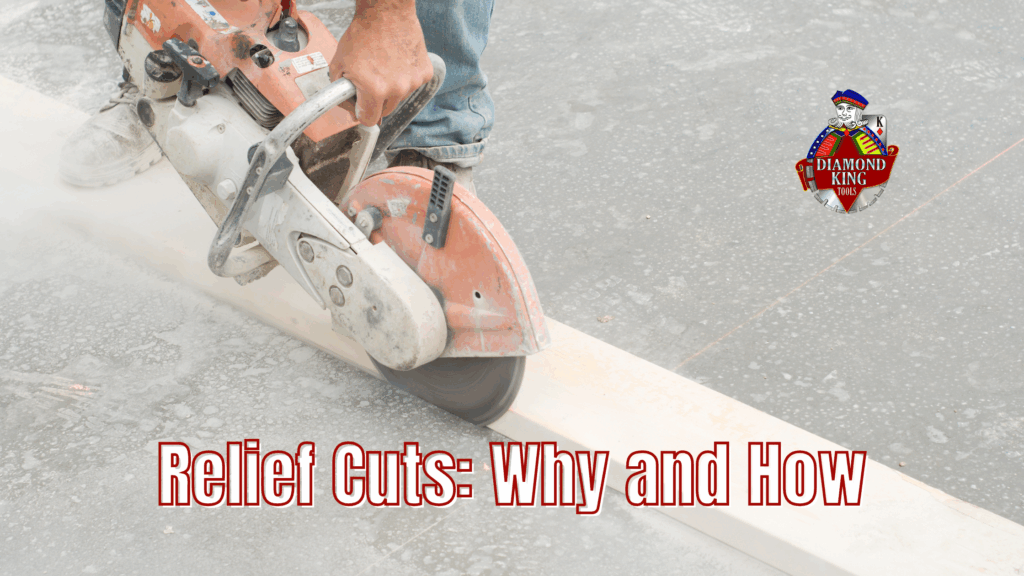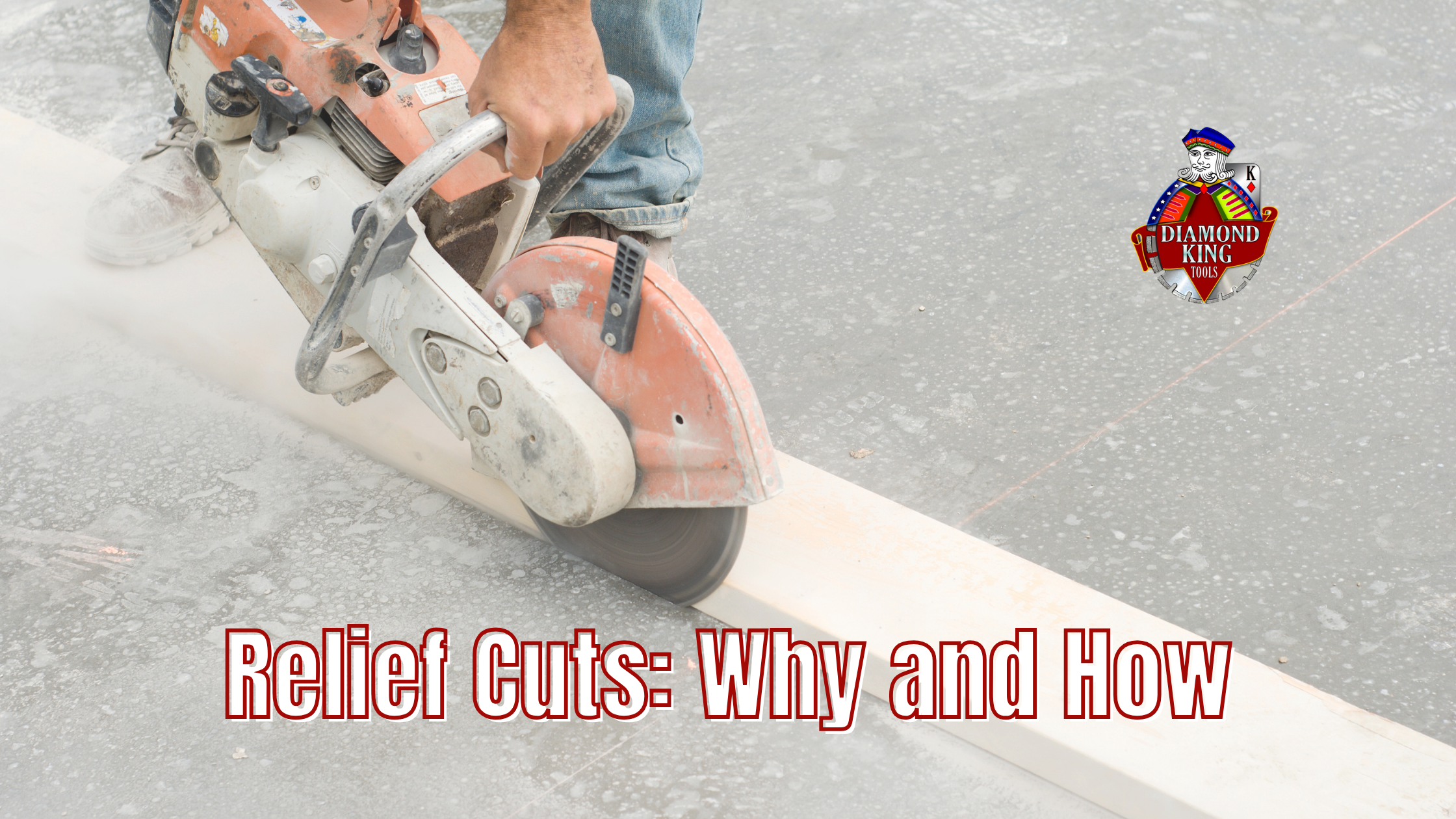When working with freshly poured concrete, one of the most critical steps in ensuring a long-lasting, crack-free surface is cutting relief cuts, also known as control joints. Whether you’re building a driveway, patio, or large slab, these cuts play a huge role in maintaining the structural integrity of the concrete.
So, why are relief cuts so important, and how do you do them correctly? Let’s break it down.
What Are Relief Cuts in Concrete?
Relief cuts are intentional, shallow cuts made in hardened concrete to control where the concrete will crack as it expands and contracts during curing and over time.
Concrete naturally shrinks as it dries, and temperature changes cause expansion and contraction. If the slab has nowhere to relieve that stress, cracks will form at random, and often in visible, unwanted places. Relief cuts create a predetermined weak point where cracking can occur neatly, keeping your project looking clean and professional.
Why Are Relief Cuts Important?
- Crack Control
Without control joints, cracks will happen anyway, but unpredictably. Relief cuts ensure they happen in straight, planned lines. - Structural Integrity
Relief cuts help reduce the risk of structural failure by guiding stress fractures to controlled areas. - Better Aesthetics
Controlled cracking means a cleaner finish, which is especially important for patios, driveways, and decorative concrete projects.
When Should You Your Cuts?
Timing is everything. Relief cuts should be made as soon as the concrete can handle cutting without raveling (chipping along the cut).
- Typical Window: 6–18 hours after finishing, depending on temperature, mix, and weather conditions.
- Too Early? The concrete may chip or ravel.
- Too Late? Cracks may form before you cut.
How Deep Should Relief Cuts Be?
The general rule: cut to 1/4 the depth of the slab. For example, if you have a 4-inch slab, make your cuts about 1 inch deep.
How to Cut Relief Cuts in Concrete
- Plan Your Layout
Control joints are usually spaced at 24–30 times the slab thickness (in inches). For a 4-inch thick slab, joints should be every 8–10 feet. - Choose the Right Blade
A diamond blade designed for green concrete works best for early-entry cutting. Blades for cured concrete can also be used if you’re cutting later. - Use a Saw with Precision
A walk-behind saw or an early-entry saw provides cleaner, straighter cuts. - Make Straight Cuts
Follow your layout lines carefully for a professional finish.
Pro Tip: Don’t Skip This Step
Relief cuts aren’t optional, they’re an essential part of any concrete project. Skipping them can lead to random cracks, costly repairs, and an uneven finish.
At Diamond King Tools, we offer premium diamond blades for all your cutting needs. From early-entry green concrete blades to heavy-duty blades for cured slabs.
Ready to make clean, precise relief cuts?
Explore our selection of diamond blades and cutting tools at DiamondKingTools.com.




